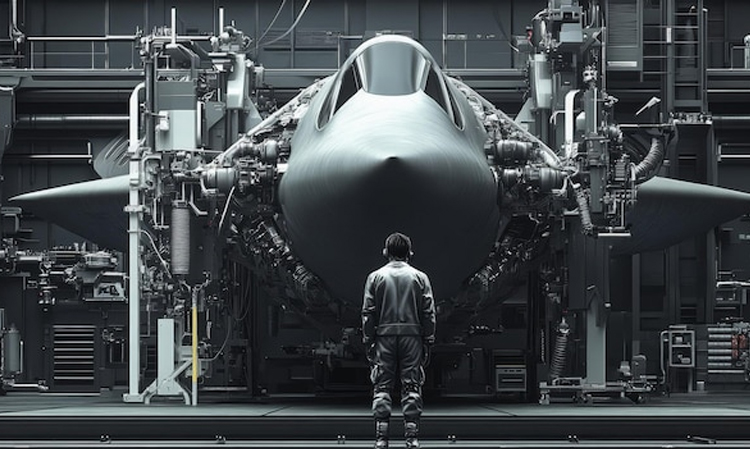The aerospace and defence (A&D) industry is a cornerstone of technological innovation, demanding machining processes that deliver unmatched precision, reliability, and performance. With global defence budgets rising and the rapid evolution of aerospace technologies, machining in this sector is experiencing significant advancements. India, as an emerging A&D hub, is aligning its machining capabilities with global trends to meet the growing demands of indigenous and export-driven manufacturing.
Increasing Demand for Lightweight Materials
Globally, the aerospace sector is shifting towards lightweight materials such as titanium, carbon-fiber composites, and high-strength aluminum alloys to enhance fuel efficiency and payload capacities. The defence sector also requires durable yet lightweight materials for applications like drones and advanced weaponry.
India is catching up with this trend, with companies like Hindustan Aeronautics Limited (HAL) and private players investing in machining technologies for these materials. For instance, India’s use of titanium in the Tejas Light Combat Aircraft (LCA) and composites in drones reflects the increasing adoption of lightweight materials.
Adoption of Advanced Machining Technologies
Technologies such as 5-axis CNC machining, precision grinding, and electrical discharge machining (EDM) are becoming standard in global A&D manufacturing. These techniques enable the production of intricate components such as turbine blades, engine housings, and precision-guided systems.
In India, the push for self-reliance under the “Make in India” initiative has accelerated the adoption of advanced machining technologies. The defence budget for 2024-25 allocates nearly 68% of capital outlay for domestic procurement, driving demand for high-precision machining within the country.
Integration of Additive Manufacturing (AM)
Additive manufacturing, or 3D printing, is transforming machining in aerospace and defence by enabling rapid prototyping, reducing material waste, and producing complex geometries. Globally, AM accounts for 30% of all rapid prototyping in the aerospace sector, with companies like Boeing and Airbus leading the way.
In India, additive manufacturing is gaining traction, with the Indian Space Research Organisation (ISRO) and defence firms using AM to create components for satellites, missiles, and aircraft. A notable example is HAL’s use of AM for aerospace component prototyping, which has reduced lead times by nearly 30%.
Emphasis on Sustainability and Green Machining
The global push for sustainability has reached the A&D machining industry, with manufacturers adopting minimum quantity lubrication (MQL), recycling chips, and using energy-efficient machines. The aim is to meet stringent environmental standards while reducing operational costs.
Indian manufacturers are beginning to implement sustainable machining practices, particularly as global OEMs demand eco-friendly production processes. This trend is critical for Indian companies competing for international contracts.
Role of Industry 4.0
Industry 4.0 technologies such as IoT-enabled machines, digital twins, and AI-driven predictive maintenance are revolutionizing machining in aerospace and defence globally. These advancements enable real-time monitoring, defect prediction, and process optimization, reducing downtime and ensuring precision.
Indian manufacturers like Bharat Forge and L&T Defence are leveraging Industry 4.0 to improve productivity and meet global standards. According to a recent report, the Indian aerospace market is expected to grow at a CAGR of 8.5% by 2030, further driving investments in smart manufacturing technologies.
Growing Role of MSMEs in India
India’s micro, small, and medium enterprises (MSMEs) are increasingly involved in machining components for aerospace and defence. With over 12,000 MSMEs supplying to defence PSUs and private players, their role is critical in strengthening India’s manufacturing ecosystem. Many are adopting advanced machining to meet the quality and precision demands of the sector.
Rising Focus on Exports
Globally, the defence sector saw an 8% rise in export orders in 2023, with the US and Europe leading. India is also making its mark, with defence exports reaching a record ₹16,000 crore in FY 2023-24. Precision-machined components are a significant part of these exports, showcasing India’s growing machining capabilities.
Machining in the aerospace and defence sector is at the forefront of technological innovation. Globally, the focus is on adopting advanced technologies, sustainable practices, and digital transformation. In India, the government’s emphasis on self-reliance and export growth is driving the adoption of cutting-edge machining processes.
As the demand for precision, efficiency, and sustainability grows, India is poised to become a significant player in the global aerospace and defence machining ecosystem. With continued investments in technology, materials, and workforce skills, the industry is set to achieve new heights, contributing to India’s economic growth and global competitiveness.
Image Courtsey : Design by Freepik



